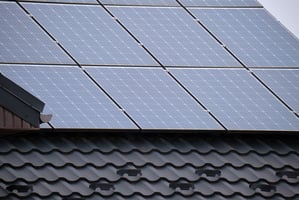Selecting the right piece of land is the first and one of the most crucial steps in building a new home. As builders, understanding the nuances of various land settings can greatly impact the success and sustainability of your projects. Whether you are looking to develop in rural, equestrian, waterfront, urban, or established community settings, each requires a unique approach and awareness. Here are some tips to help you navigate the complexities of land selection in these diverse environments.
Rural Land Selection
Building in rural areas offers vast opportunities due to the typically larger plots available. Key considerations include access to utilities, road infrastructure, and zoning laws. Rural land may not have immediate access to water and sewer systems, necessitating the installation of septic systems and wells, which can significantly impact your budget and planning. Additionally, evaluate the land’s topography and soil quality to ensure it supports the type of construction you plan.
Equestrian Property Development
Developing equestrian properties requires a deep understanding of both the needs of horses and their owners. Key features to consider are the quality and size of the land, which must accommodate facilities such as stables, arenas, and paddocks. Proximity to trails and the availability of flat, usable land for training and grazing are also crucial. Furthermore, local regulations may dictate specific requirements for animal density per acre or manure management.
Waterfront Development
Waterfront properties are highly coveted for their views and potential for recreational activities. However, they come with their own set of challenges and regulatory hurdles. Considerations include flood risk, erosion control, and environmental impact assessments. It’s vital to understand local restrictions on dock and boathouse construction. Waterfront developments often require additional insurance and resilient building practices to safeguard against water-related damages.
Urban Land Selection
Building in urban settings involves navigating zoning laws, parking requirements, and often stricter building codes. The availability of vertical construction opportunities due to space limitations makes understanding air rights essential. Urban land is typically more expensive and may come with pre-existing structures, requiring demolition or renovation. Additionally, engaging with community boards and local planning officials early in the process can facilitate smoother project approval.
Developing Within an Existing Community
When building within an established community, it's important to match or complement the existing architectural styles and community norms to maintain property values and appeal. Homeowners' association (HOA) rules and community guidelines can significantly influence design and building materials. It’s also wise to consider the community's infrastructure and amenities, as these can affect future property values and attract potential homebuyers.
Key Takeaways for Successful Building Projects
Selecting the right land for your building project involves more than just finding a beautiful spot. It requires strategic thinking, comprehensive research, and understanding the specific challenges and opportunities of each environment. By carefully considering each aspect of the land, from legal issues to environmental impacts and community integration, you can lay a solid foundation for successful and sustainable development.
For builders, mastering the art of land selection not only enhances the feasibility and profitability of your projects but also ensures that new homes are well-integrated into their chosen settings, providing lasting value to both owners and communities. I am happy to talk with you about any of this, Alair Homes has experience building in all environments.




